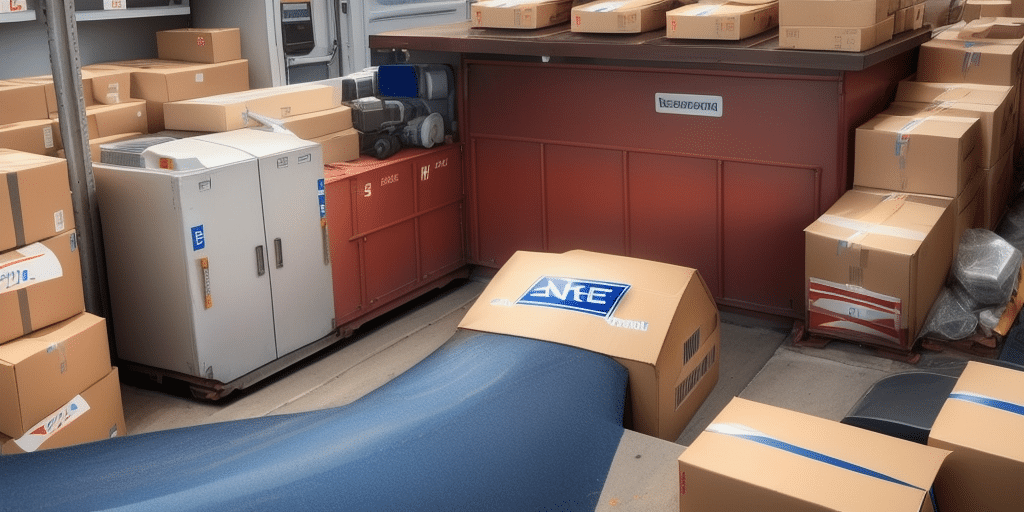Understanding USPS Priority Mail Insurance Rates
USPS Priority Mail is a preferred shipping option for individuals and businesses that require fast and reliable delivery. Beyond its swift delivery times, USPS Priority Mail offers insurance coverage to protect your packages against loss or damage. However, understanding the various types and rates of Priority Mail insurance can be complex. This comprehensive guide will cover everything you need to know about USPS Priority Mail insurance rates, including what it is, how it works, why you need it, and how to calculate costs and file claims.
What is USPS Priority Mail?
USPS Priority Mail is a shipping service provided by the United States Postal Service (USPS) that guarantees delivery within a specific time frame. It includes features such as tracking, insurance, and free package pickup from your home or office, making it a convenient option for both individuals and small businesses.
For domestic shipments, Priority Mail typically delivers within 1-3 business days, while international shipments may take 6-10 business days, depending on the destination. This service is ideal for time-sensitive packages and is widely used for sending important documents, electronics, and other valuable items.
For more details on USPS Priority Mail services, visit the official USPS Priority Mail page.
Understanding Priority Mail Insurance
How Priority Mail Insurance Works
Priority Mail insurance provides coverage for your package in the event it is lost or damaged during transit. The cost of insurance is based on the declared value of the package, and different types of insurance coverage are available to suit various needs.
It's important to declare the full value of your package to ensure adequate reimbursement in case of loss or damage. Certain items, such as perishable goods or hazardous materials, may be excluded from insurance coverage, so always review the USPS insurance policies before purchasing.
Benefits of Priority Mail Insurance
- Financial Protection: Reimburses the declared value of lost or damaged items.
- Peace of Mind: Provides assurance that valuable or irreplaceable items are covered.
- Expedited Claims Process: Facilitates quicker reimbursement compared to uninsured shipments.
Types of Priority Mail Insurance
- Standard Insurance: Covers up to $50 of the package's value at no additional cost.
- Priority Mail Express Insurance: Covers up to $100 of the package's value for free when using Priority Mail Express service.
- Additional Insurance: Purchase coverage for package values exceeding $50, up to $5,000.
- Merchandise Return Service Insurance: Specifically covers merchandise being returned to the sender.
For more information on the types of insurance available, refer to the USPS Insurance Service.
Calculating Priority Mail Insurance Rates
The cost of Priority Mail insurance depends on the declared value of the package and the type of insurance selected. Generally, higher-value items will incur higher insurance fees. Packages valued over $500 may have additional fees. To estimate the cost of insurance, you can use the USPS Insurance Calculator or consult with a USPS representative.
It's crucial to note that Priority Mail insurance covers only the value of the package contents, not the shipping costs. If you need coverage for shipping expenses, consider purchasing additional insurance or exploring other options.
Factors Affecting Priority Mail Insurance Rates
- Declared Value: Higher declared values result in higher insurance costs.
- Package Weight and Size: Larger and heavier packages may require more robust packaging, potentially increasing insurance rates.
- Destination: Domestic shipments generally have different rates compared to international shipments.
- Type of Items: Certain items may require special handling or packaging, affecting insurance premiums.
Additionally, selecting a higher level of coverage will increase the overall insurance rate. It's essential to accurately assess the value and nature of your package to determine the appropriate insurance level.
Filing a Claim for Priority Mail Insurance
If your package is lost, stolen, or damaged during transit, you can file a claim with USPS to receive reimbursement for the insured value of the items. Here’s how to file a claim:
- Gather Documentation: Keep all original receipts, tracking information, and any relevant documentation about the shipment and its contents.
- Submit a Claim: Claims can be filed online through the USPS Claims Portal or at a local post office.
- Provide Necessary Information: You will need to provide details about the shipment, including the tracking number, a description of the item, and the reason for the claim.
- Await Resolution: USPS will review the claim and, if approved, issue reimbursement based on the declared value.
Be aware that certain items, like cash, jewelry, and perishable goods, may have restrictions or may not be covered under standard insurance policies. Always review USPS guidelines before filing a claim.
Common Misconceptions and Alternatives
Misconceptions About Priority Mail Insurance
- Insurance is Always Required: In reality, insurance is optional and based on the sender's discretion.
- All Priority Mail Packages are Automatically Insured: Only specific types of Priority Mail include free insurance; additional coverage must be purchased separately.
Alternatives to USPS Priority Mail Insurance
If USPS Priority Mail insurance does not meet your needs, there are alternative options available:
- Private Shipping Carriers: Companies like FedEx and UPS offer their own insurance options with varying coverage terms.
- Third-Party Insurance Providers: Some businesses opt for third-party insurance to cover shipments, which may offer broader coverage or competitive rates.
- Self-Insurance: Setting aside funds to cover potential losses can be a proactive way to manage risk, especially for high-volume shippers.
Pros and Cons of USPS Priority Mail Insurance
Advantages
- Cost-Effective Protection: Offers a reasonable level of coverage for the price, especially for standard value items.
- Integrated Service: Insurance is seamlessly integrated with Priority Mail shipping, providing ease of use.
- Reimbursement Coverage: Provides financial reimbursement in the event of loss or damage.
Disadvantages
- Limited Coverage: Standard insurance may not cover high-value or specialized items without additional fees.
- Exclusions: Certain items, such as cash and hazardous materials, are not covered under standard policies.
- Claims Process: While expedited, the claims process can still be time-consuming and may require substantial documentation.
Frequently Asked Questions About USPS Priority Mail Insurance Rates
- Is Priority Mail insurance required?
No, insurance is optional and based on the sender's discretion. - What types of items are covered by Priority Mail insurance?
Most non-perishable and non-hazardous items are covered. Items like cash, jewelry, and perishable goods may have restrictions. - Can I purchase additional insurance beyond the included amount?
Yes, additional insurance can be purchased to cover higher-value items, up to $5,000. - How much does Priority Mail insurance cost?
The cost varies based on the declared value of the package and the type of insurance selected. Use the USPS Insurance Calculator for estimates. - What should I do if my package is lost or damaged?
File a claim through the USPS Claims Portal or at your local post office with all necessary documentation.
Conclusion: Is USPS Priority Mail Insurance Worth It?
Deciding whether to purchase insurance for your USPS Priority Mail package depends on the value and importance of the items being shipped. For high-value or irreplaceable items, Priority Mail insurance offers essential financial protection and peace of mind. By understanding the types of insurance available, how to calculate rates, and the claims process, you can make an informed decision that best suits your shipping needs.
For more information and to explore USPS shipping options, visit the official USPS website.






















